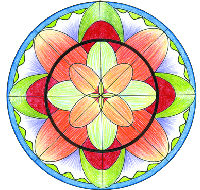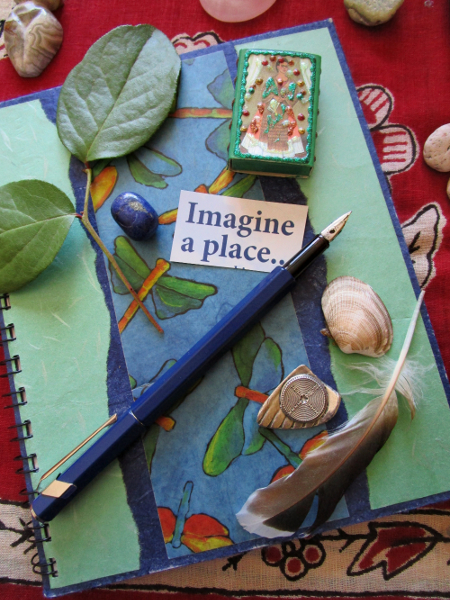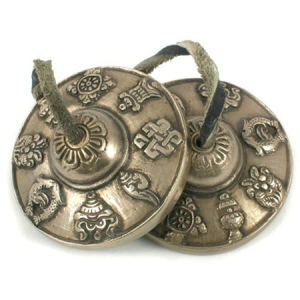“Nothing’s changed. Everything is different,” said Linda, Sarah’s hair stylist when she came to cut Sarah’s hair in our courtyard garden one day when the weather was milder. She meant things continued to be different and in that way nothing had changed. (Or it could have been when she came inside; our only human visitor in many months.)
“Different” became our way of life in 2020 and has continued to be so. I continued to write and to do that in community. While we had to stop meeting in my living room in the spring of 2020, the Writing Life women’s writing circle continued via email. It was a practice that sustained us through the toughest days and continues to do so. While we acknowledge and honour losses of people and ways of life, we also honour the emotions surrounding those losses.
 In the spring of 2020, a Nanaimo circle of women as well as women in a circle “from away,” thirteen in all, wrote on their own at home and shared their writing with the group via email. I responded to all of them and felt busier than usual.
In the spring of 2020, a Nanaimo circle of women as well as women in a circle “from away,” thirteen in all, wrote on their own at home and shared their writing with the group via email. I responded to all of them and felt busier than usual.
“Calling Your Spirit Back” was the theme of the Writing Life circle based on a poem of Joy Harjo’s entitled “Calling the Spirit Back from Wandering the Earth in Its Human Feet” (from Conflict Resolution for Holy Beings, W. W. Norton, 2015).
On Facebook I saw someone post a message that was something like “Hey you introverts, put down that book and tell we extroverts what to do . . .” It felt that even though my connections were via email, it was an extroverted sort of activity to connect to the women in that way. I would send them notes that included poems, resources and writing practice prompts. The mandala to the left by Sarah Clark is entitled “Come to Centre.” I use it in the notes to denote each writing practice prompt.
Last spring, was a time of quiet when some people began working from home and continue to do so, shops were closed and streets were empty. For some, work got busier putting protocols in place such as at the grocery store. (Thank you for being there and all that sanitizing inside and out!) Frontline workers including my daughter who is a nurse and my son-in-law who is a police officer in Ontario were more at risk in their daily work. Some people’s livelihoods ceased to support them and they found new ways to share their products, skills and talents.
It seemed a good time to approach the writing circle “from away” with the theme of writing as a practice of self-compassion. For the April to May circle, I used the phrases “A House in the Rain, An Umbrella in the Sun” from another Joy Harjo poem. The phrases are from “Perhaps the World Ends Here” which is about a kitchen table. Here is an excerpt:
At this table we sing with joy, with sorrow. We pray of suffering and remorse. We give thanks.
Perhaps the world will end at the kitchen table, while we are laughing and crying, eating of the last sweet bite.
(included in The Woman Who Fell From the Sky by Joy Harjo W. W. Norton and Company Inc., 1994)
 In the summer, when it was okay to meet outside, there were a few small gatherings of the writing circle women. When the Writing Life circle began again in September we met in one of women’s large living room. (Thank you Diana!) Our theme was “Inside the Treasure House” as I had been thinking of various museums with their unique approaches to specific collections. I realized each person is a treasure house.
In the summer, when it was okay to meet outside, there were a few small gatherings of the writing circle women. When the Writing Life circle began again in September we met in one of women’s large living room. (Thank you Diana!) Our theme was “Inside the Treasure House” as I had been thinking of various museums with their unique approaches to specific collections. I realized each person is a treasure house.
There is a gift inside you
Do not let it gather dust in a far closet
Tanya Evanson wrote in “Blood and Honey” (included in Nouveau Griot, Frontenac House, 2018). (Tanya is now known as Tawhida Tanya Evanson.)
When we set out to write, we don’t know where we’re headed. That’s why it’s good to have some rituals in place to ease the anxiety whether in the writing circle or writing on ones’ own. The November circle, “Destination Unknown: Ritual as Road Map,” acknowledged that unknown destination as well as the importance of ritual and ceremony. The circle started in person for one week and then we switched to email and Zoom. One of the writing circle members, Carol, suggested “ritual as road map” one day and I wanted to explore that theme. We had a look at various rituals and ceremonies including one’s own “tea house practice” and the hours of a monastery day.
I very much appreciate what the late Richard Wagamese had to say in about ritual and ceremony in his book One Drum: Stories and Ceremonies for a Planet (Douglas & McIntyre, 2019:
Ceremony is a way to allow our emotional energy to encounter the wonder, the awe and the reverence that comes from an encounter with the divine, the sacred. It is a road to the true nature of our selves.
In the circle, we tried our hand at writing a glosa as each week I like to look at a different poetic or creative nonfiction form. The glosa is a way of having a conversation with another poet’s poem. This is the first stanza of Patrick Lane’s “The Garden Temple” which is a glosa in which each of the poem’s stanzas ends with a line from P. K. Page’s “The Answer” (which is also a glosa):
No one comes to this garden. The dawn
moves through the bamboo beside the bridge.
It’s quiet here and I’m alone. The small nun
who led me has drifted behind the screen
and I’m quiet as I watch a slender mallard
drift on the pond into first light. She is two birds,
one above and one below. Night and day,
and night was long again. You are far away.
Tell me every detail of your day.
(included in In Fine Form 2nd edition, edited by Kate Braid & Sandy Shreve, Caitlin Press, 2016)
During the early days of the pandemic, I wrote some poems and two of them were published in anthologies of “pandemic poetry.” I wasn’t paid for the poems as is often the case with anthologies and there’s other writing I do that is not paid or pays very little for the amount of work done. I realized that I write for the love of it. There are explorations and discoveries made. I am continuing with my writing as a spiritual practice. I am part of a community of poets and writers when I correspond with them and share my work.
With one essay I wrote for a literary journal, I had the expertise of an editor who helped me improve the essay. While I won’t be paid a large amount, the editor volunteered her time making suggestions and that was a huge gift to me. There are many gifts to writing and tuning into one’s self and something larger than ourselves.
All of those musings and acknowledgements led to the theme of the circle now taking place which is ‘Writing for the Love of It.” I made a couple of collages on the theme as I like to see what the images have to tell me. I came up with some aspirations from those images such as:
May I seek direction and solace from the moon, my ancestors and muses.
May I become bold and brave in a circle of wise witnesses.
May I honour ceremony.
May I consider what complements my writing such as symbols, games, photographs, the garden.
May I embrace peace, pleasure and delightful harmony.
 I’ve appreciated being able to stay connected to the women of the writing circle whether through email and Zoom. It’s good to see one another’s faces and to share our writing in this way. To some it is a lifeline. I still create a ceremony with the ringing of the ting sha and having us all take three deep breaths with thanks to Thich Nhat Hanh: one to let go, one to stay here and one to surrender to what’s next. I read an opening poem. We pass the talking piece so each woman has an opportunity to “check in” and let us know how they’re doing. In terms of Zoom, when the yellow border lights up we know it’s time for that woman to speak and the rest of us will listen without interruption. After reading and writing together, we do a “checking out” followed by a closing poem. We attempt to sing together or say the words:
I’ve appreciated being able to stay connected to the women of the writing circle whether through email and Zoom. It’s good to see one another’s faces and to share our writing in this way. To some it is a lifeline. I still create a ceremony with the ringing of the ting sha and having us all take three deep breaths with thanks to Thich Nhat Hanh: one to let go, one to stay here and one to surrender to what’s next. I read an opening poem. We pass the talking piece so each woman has an opportunity to “check in” and let us know how they’re doing. In terms of Zoom, when the yellow border lights up we know it’s time for that woman to speak and the rest of us will listen without interruption. After reading and writing together, we do a “checking out” followed by a closing poem. We attempt to sing together or say the words:
The circle is open
but unbroken
merry meet
and merry part
and merry meet again
